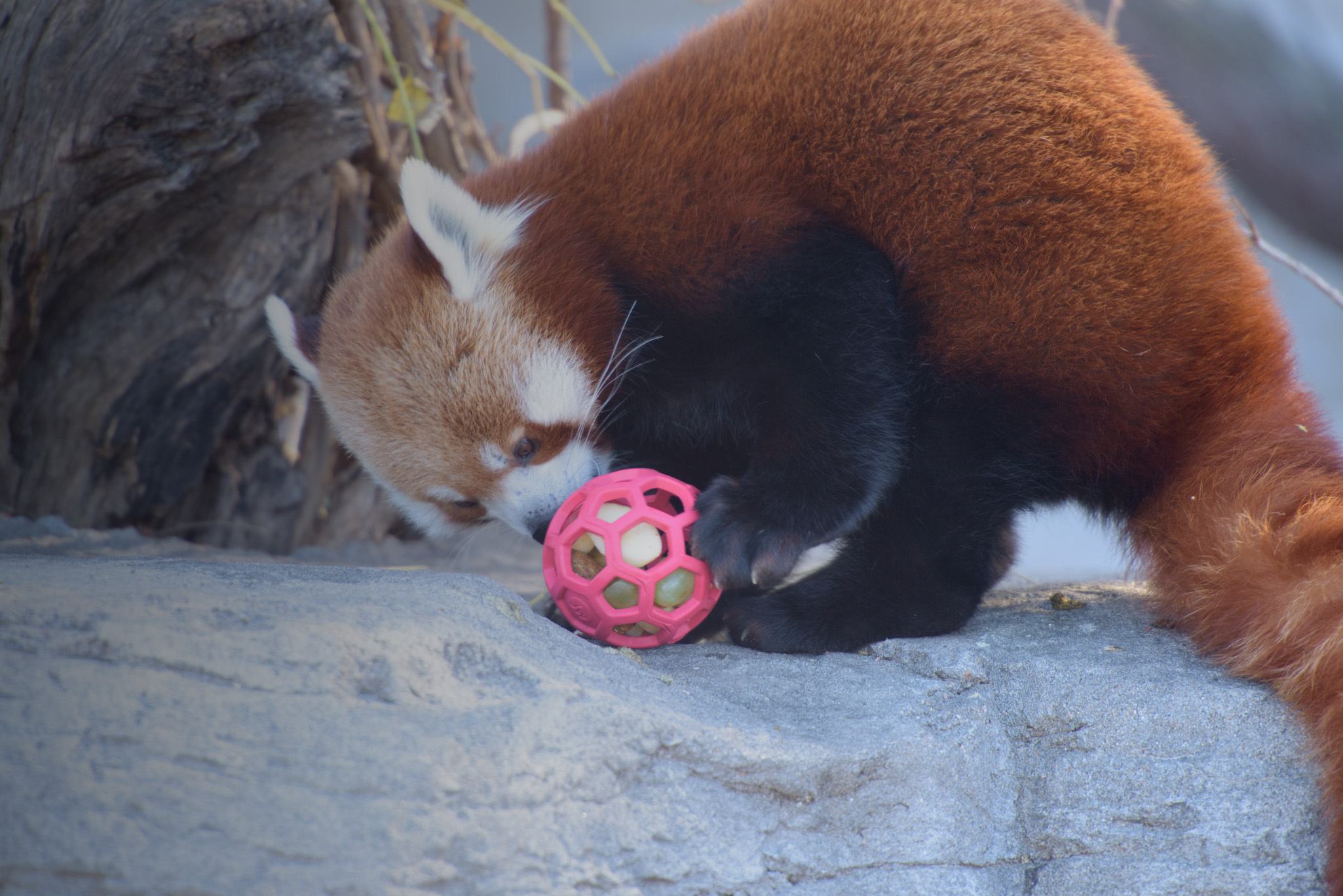
Animal Enrichment & Training

Animal training and enrichment go hand-in-hand here at the Saint Louis Zoo. Both have to do with an animal's behavior and how they act and react to different situations.
With animal enrichment, keepers create environments that provide a stimulating life for our animals, with opportunities to engage in natural behavior, be more active and have more control over their environment. Enrichment helps satisfy both the physical and psychological needs of animals and allows them to make choices.
Enriching an animal's environment comes in many forms, including altering the physical environment, modifying animal care, creating social groupings and increasing sensory stimulation. You may have seen our bears playing with boomer balls and our apes playing with plastic crates. These are examples of adding "furniture" for an animal to play with. Other examples of animals enrichment include:
- Providing live and artificial plants for shade and barriers
- Creating vertical dimensions using trees, ropes or rock work to increase and enhance living space
- Using puzzle feeders that offer a challenging and time-consuming method of obtaining food
- Housing a variety of compatible animals from the same habitat together
- Applying scents (spices, perfumes, food, dung) around a habitat
- Simulating or using real prey items in predator habitats to encourage stalk-and-chase behaviors
Animal training is another form of enrichment as well as an animal management technique.
The animals at the Saint Louis Zoo are trained through positive reinforcement. Through training animals voluntarily participate in doctors' visits, allow general housekeeping in their area and work with keepers while getting a pedicure or shower. Achieving these tasks through trained behaviors requires a devoted trainer, a well-prepared plan and a motivated "student." The motivation (or the reinforcement) can be food such as produce, bread or browse, or it can be tactile, such as brushing or scratching. Many animals are also motivated by the mental exercise and special attention during training sessions.
Training allows keepers and veterinarians to do their jobs more safely and easily. It also allows animals to receive the best care possible through their own willing involvement in the process. While training is often used to perform husbandry tasks, it is also enriching for the animals. It provides a challenge for them and offers them the opportunity to earn a reward that they find worthwhile. Training is rapidly becoming a vital tool in animal care.

Support Animal Enrichment
Guests can view the Zoo's animal enrichment "wish list" to learn more about what they can give to help animals at the Zoo.
Explore the list on Amazon or click below to view the PDF.

